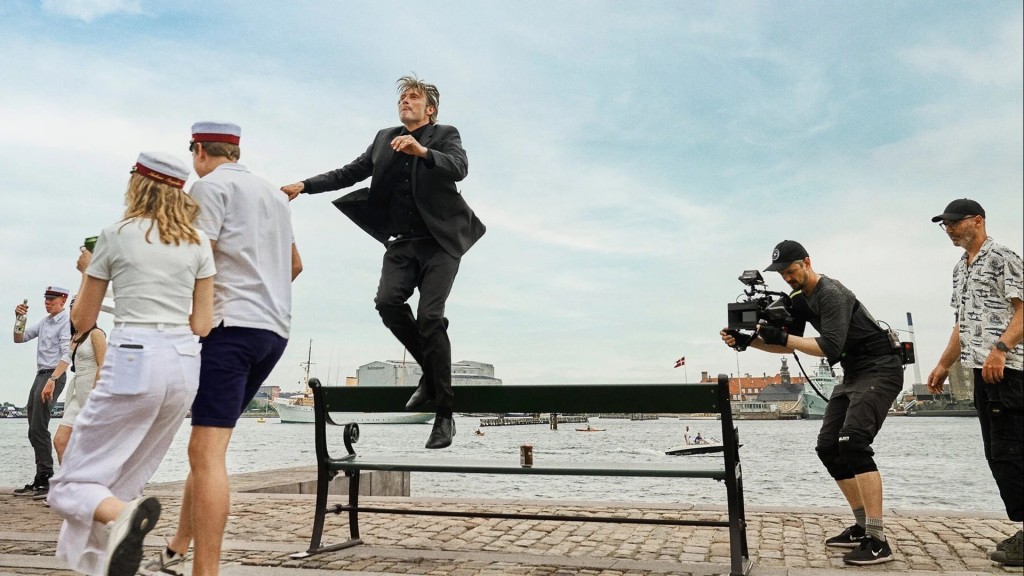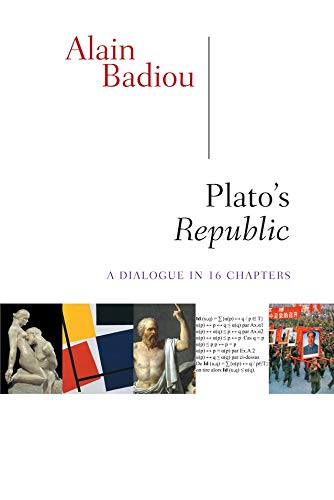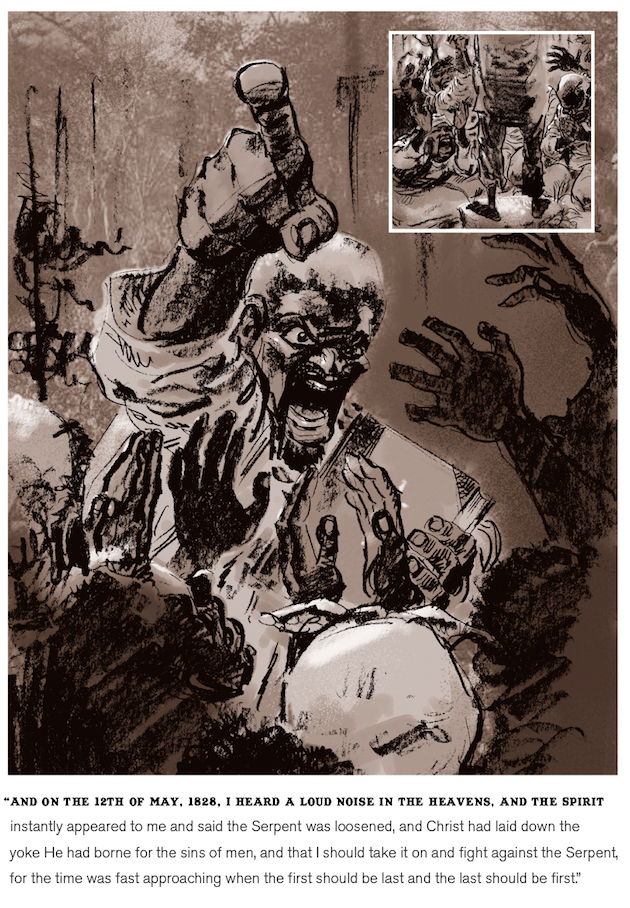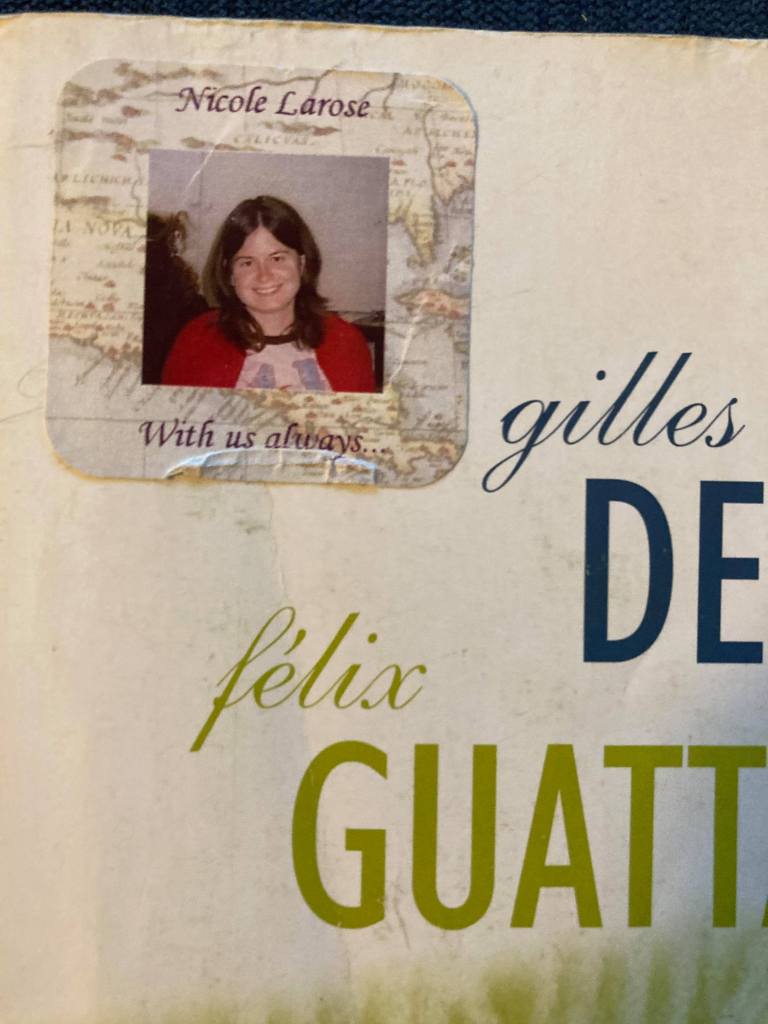
Invoking Hope: Theory and Utopia in Dark Times
(U Minnesota Press, 2020)
As I was finishing my reading of Phil Wegner’s Invoking Hope: Theory and Utopia in Dark Times, I watched Thomas Vinterberg’s film Druk (2020). The Danish title literally refers to “binge drinking” but, due to the moralistic context of the phrase in English, is translated for American audiences as Another Round. Druk features Mads Mikkelsen as a middle-aged history teacher named Martin who once had hopes of becoming a University professor, but has instead settled into what’s become a largely unrewarding position at a Gymnasium in Copenhagen. At the 40th birthday party of his friend, Martin learns of the work of real-life philosopher Finn Skårderud who argues that human beings are born with a blood-alcohol level (BAC) that is .05% too low for optimal happiness, creativity, and relaxation. Martin and his friends decide to maintain a constant elevated BAC during the day to see if it makes them happier. The experiment initially succeeds, but quickly falls apart. Martin’s family worries that he is descending into alcoholism, his wife reveals that she’s having an affair, and Martin’s friend and co-participant in the experiment dies while drunk on a boat with his dog. Even so, the film ends on a strangely celebratory note, with Martin and his friends joining in on the semi-drunken post-graduation celebrations of their students. The ambiguous denouement of Druk features Martin performing a brilliant dance routine that, in the apt words of a Vulture reviewer “offers an ecstatic reminder that someone may not still think of himself as a dancer, but that doesn’t mean he’s forgotten how to dance.”

I kept thinking about that strange ending of Druk as I considered Wegner’s work on the necessity of utopia in difficult times and its contextualization in, as Wegner quotes Crystal Bartolovich, imperatives in critical theory to “scale back, pare down, [and] reclaim our disciplinary territory and hold on to it” (2). Druk invokes a very different sense of utopia than many of the sources in Wegner’s book. It’s hardly unknown that a significant percentage of University professors and students are high-functioning alcoholics — due perhaps to the combination of overbearing administrative oversight and standardized testing and performance review that are the hallmarks of the neoliberal University. Yet instead of engaging in what Wegner calls a “moralistic criticism,” Druk perversely uses alcohol to engage in various experiments in solidarity and utopia. One of the more uncomfortable, but also unique, moments in the film for this American viewer involves a teacher offering his student a small amount of alcohol to calm him down in order to take his test. In this context, and instead of reclaiming disciplinary territory, the final scene is a dramatic representation of the possibilities involved in constructing spaces of creativity and inclusion in the midst of social and personal trauma.
Wegner contextualizes Invoking Hope around the “dark times” experienced after the 2016 election of Donald Trump, and he spends considerable time in the introduction connecting the post-critique arguments of Rita Felski to the ongoing atrophy of humanities departments in American Universities. I generally have little interest in the intricacies surrounding the post-critique debate, yet I find compelling the connections Wegner makes between post-critique, various pessimist discourses in critical theory, and the retreat of the humanities in Universities and in public life. I remember watching old television appearances of Marshall McLuhan and E.P. Thompson and wondering why no one seems to listen to humanities professors anymore. I also remember, among many horrible happenings in the days after the 2016 election, far-right WA state representative Matt Shea asking for a list of professors who canceled class the day after the election. Shea has since been implicated in several acts of domestic terrorism, including contributing to a manifesto called the “Biblical Face of War,” that encouraged the killing of all males who did not agree with a post-war imposition of Biblical law and its prohibitions against abortion, same-sex marriage, and communism. It seems we are far from that utopian event of May 1968, in which scholars joined with students, workers, and farmers in what Kristin Ross calls “a new kind of organizing” emphasizing connection and cooperation over the isolation imposed by the police (25).
Wegner sees an alternative to the moralizing criticisms of post-critique in what he calls “non-reading:” a method he borrows and builds upon from Pierre Bayard in Chapter 2. Bayard’s book How to Talk about Books You Haven’t Read was lambasted when it was first published in 2007 by many critics who refuse to take non-reading seriously. Wegner shows, on the contrary, that non-reading happens in most reading practices. He demonstrates this by looking at the long reception history of Thomas Moore’s Utopia. I know very little of Moore’s work, but I found the chapter to be a very accessible introduction to the book and a passionate plea for continued dialogue in a moment when such open discussion seems complicated by a resurgence of both fascism and the pitfalls of social media tribalism. “Non-Reading” reinscribes the stakes of political interpretation, away from the moral criticism Wegner aligns with post-critique and toward understanding it (along with aesthetic criticism, historicism, and Marxism) as what he — following Frederic Jameson — calls “a set of categories in terms of which reality is analyzed or interrogated, and a set of ‘contested’ categories at that” (qtd in 5). By admitting a space where total mastery cannot occur, the various manifestations of “non-reading” resist the individualist and myopic claims of moral criticism — replacing it with a collective, dialectical project that values dialogue and vulnerability.
The Moore chapter forms a useful parallel to Chapter 1 featuring Alain Badiou’s hypertranslation of The Republic, which Wegner reads as exemplary of “deep listening.” As someone who read the standard Alan Bloom translation of The Republic in my undergraduate philosophy class, it was surprising to see how hypertranslation and deep listening could put into relief the various stakes of teaching The Republic in “dark times.” Bloom, of course, is a famous conservative classicist that lambasted the “moral relativism” of Universities in his 1987 book The Closing of the American Mind. The perspective accords well with what seem to be the themes of The Republic, which features the banning of poetry from Plato’s ideal society and the training of an elite group of philosopher kings to rule over the city. In reality, the difference between Bloom’s reading of Plato’s utopia, and Wegner’s reading of Badiou’s hypertranslation of The Republic puts into relief the struggle to wrestle democracy from white supremacy and capitalism. As Wegner shows, Badiou replaces “the conventional names given to Plato’s ideal form of the republic […] with that of communism.” This has the effect of displacing Bloom’s idolization of Socrates as the “philosopher par excellence” who controls the direction of the dialogue at all times. (Wegner, someone who is well-versed in Paul de Man’s reflections on irony, obviously understands the limitations of Bloom’s characterization of Socrates as the ultimate philosophical ironist). Instead the philosophical dialogue becomes the dialectic, what Wegner and Badiou also identify as love or minimal communism because”the real subject of love is the becoming of the couple and not the mere satisfaction of the individuals that are its component parts” (qtd on 63). I have a problem with limiting the work of dialogue and love to the couple, which comes out in a later chapter of Wegner’s and has implications to the place of polyamory and queer theory in communism — but Wegner’s reading of communist Platonism as a celebration of listening is a powerful alternative to the moralizing monologues that are often at the heart of many literary critical texts.

(Columbia UP, 2013).
Clearly it is quite easy to delve into any of the numerous theoretical rabbit holes Wegner presents in his chapters — indicative not only of the breadth of his knowledge, but the dialectical engagement he models as part of his scholarship. Wegner’s chapters are structured to invite his readers into non-moralistic conversations with the intention of creating the intellectual coalitions he mentions in his introduction. In the interests of brevity, however, I’ll present the remainder of his chapters as three sentence responses articulating my most cogent thoughts about each of them. Chapter 3 delves into the debate between Henry James’s defense of psychological realism in the novel and H.G. Wells’s historical and social forms of world building. James’s program for the novel finds its counterparts in English Departments that favor formal experimentation and psychological depth purged of explicitly political content. Wells, on the other hand, comes to stand in for novels that explore what Wegner calls (in the context of David Mitchell) “what it means collectively to inhabit, and act in, an emerging collective reality” (116). Chapter 4 focuses on W.E.B. Du Bois’s rehabilitative reading of abolitionist John Brown. Given that my introduction to Civil War history was through what was (at best) the neoliberal lenses of Bruce Catton and Ken Burns, I was surprised to see how Du Bois’s understanding of Hegel recontextualized Brown’s violent insurrections as part of a larger world-revolutionary struggle that included both the often-misunderstood Haitian Revolution and Nat Turner’s rebellion. In this sense, one could read Du Bois’s work alongside Kyle Baker’s graphic novel Nat Turner as texts that remove “the appearances constructed by the presuppositions and formal demands of national histories, be they liberal or conservative, that mask the global and universal aspects of the struggles underway as much in Brown’s moment as our own” (141).

Chapter 5 reads Isak Dinesen’s Babette’s Feast, in which the eponymous character spends money she won in the French lottery on an elaborate feast for her community. Wegner shows how the dinner Babbette creates follows the utopian gesture of the Kuenstlerroman or artist narrative, in which the realization of the artist parallels an impossible artistic project. By also exploring Gabriel Axel’s film adaptation of the novel, which minimizes references to the Paris Commune forming a backdrop for Dinesen’s original novel — Wegner shows the difference between fidelity to memory as a “numbing opiate,” as it becomes in Axel’s film adaptation; and one in which is a matter “of how we live, of what we do in our bodies, and not what we think silently, believe, or feel in our hearts” as we see in Dinesen’s original novel (163). Chapter 6 looks at the Adam Sandler and Drew Barrymore film 50 First Dates, in which Sandler courts Barrymore over and over again because she has short-term amnesia. Seeing the film as a “comedy of remarriage,” Wegner uses it to explore Badiou’s definition of love as a political and evental encounter (169). 50 First Dates refuses the normative or recuperative romantic ending, since we never see Barrymore’s character recovering from her condition; instead, each time she has to recover her memory, Wegner shows the slow process of building and rebuilding human connection and community.
Chapter 7 continues Wegner’s development of love and utopia from the previous chapter by looking at Kim Stanley Robinson’s 2312 and Karen Lord’s The Best of all Possible Worlds. I’d like to pause here to consider the former, because it illustrates my slight criticism of Wegner’s (and I’d argue Badiou’s) reading of revolutionary love. As a Robinson fan, I find that he sometimes disappoints me with an over reliance on normative tropes particularly when he depicts gender and sexuality. We see this not only in the characterization of some of his female characters, for instance the male-gaze hypersexualization of Freya in Aurora and Amelia in New York 2140; but also in the way Robinson imagines post-gender in 2312. 2312 depicts many different gender variations while also revealing that most characters are intersex or have “gynandromorphic” sex characteristics and have longer lifespan as a result. Yet the romance between Swan and Wahram is also oddly traditional, taking on many of the tropes of a Victorian marriage plot. Swan is also treated like a stereotypical female character in a romantic comedy who had been traumatized and now cannot commit to a “real” relationship. Even Robinson’s recent novel, The Ministry for the Future, contains a strange moment in which Mary (the head of the Ministry) is confused by the sexual identity of her non-binary secretary. While Robinson is admittedly writing in a time of great change in the way people imagine and depict love and gender, his writing is also symptomatic of a certain normative imagining of queer sexual identities. I’d argue that my criticism also extends to how love is conceptualized by Badiou as “the becoming of the couple.” When considering relationship models like polyamory and relationship anarchy, it is worth questioning a relationship structure that has been linked by Marxists (in the form of the nuclear family) to the reproduction of capitalism. None of this is to suggest that the couple has no function in utopia, or that the readings provided by Wegner and Badiou do not demonstrate the political power of love, simply that the couple by no means exhausts its potential. Further, polyamory has an untapped power in helping us to imagine alternative kinship structures — and by extension alternate worlds.
Despite the few slight problems I had with Invoking Hope, Wegner’s conclusion epitomizes everything I find valuable about his book. In particular, he asks, in the voice riffing off of the penultimate paragraph of David Mitchell’s Cloud Atlas, how do we live a life shaping the world we want, rather than expending all of our energies just fighting against the world we fear? Rejecting the various pessimisms in contemporary theory (he cites “[a]fro-pessimism, the antisocial turn in queer theory, and climate pessimism”), Wegner uses Mitchell’s novel to broaden the perspective of our various struggles against racism, heteronormativity, and climate change (207). Actions we undertake today ripple across our various futures. What is utopia but the unceasing collective fidelity to hope and act in the here and now, particularly when history seems to be darkest? As my friend, and Phil’s student, Nicole LaRose wrote about Frederic Jameson’s thought in her 2006 dissertation Gangsters, Zombies, and Other Rebels: Alternative Communities in Late-Twentieth Century British Novels and Films, Jameson saw utopia not as the absence of conflict but as the “potential for interpersonal relationships when freed from the domination of the economic, political, and the social” (66).
Indeed, life for Nicole, Todd, and I at 222 NW 4th Avenue in Gainesville, Florida during the years of 2004-2006 was far from utopian. Nicole was busily reading at least a novel a day (usually something by Martin Amis) while finishing her dissertation work. Todd was putting in untold hours organizing for our graduate union. I, on the other hand, was lost. I’d finished my exams and was told to start writing my dissertation. I didn’t know how to begin. During the summer Nicole defended, I’d had a flare of a rare autoimmune disease causing vertigo and hearing loss — what the doctors at the time thought was Meniere’s Disease. I could hardly hear my friends, let alone any students who might sit in the University of Florida’s large classrooms. At one point, clearly frightened herself of what had happened to me, Nicole asked “how are you going to teach?” I had no idea.
At her going-away party, each one of Nicole’s friends was asked to recount one of our favorite memories with her. I’d recovered some of my hearing at that point, so I decided to sketch the banal moments Todd, Nicole, and I had watching television at night. Most of the time our choices consisted of The Daily Show, followed by reruns of South Park. Sometimes Todd and Nicole forced me to watch SportsCenter or (even worse) unending episodes of Law and Order. As I look back at our choices, few of them expressed the utopian lessons found in many of the sources Wegner cites in his book. Perhaps they were at best what Wegner citing Slavoj Zizek calls an “academics ‘excuse for indulging’ in one’s deeply, and even shamefully, personal ‘idiotic enjoyment of popular culture” (169-70). But even then, in front of the television, we took stock of our collective labor, healed from our various depressions and autoimmune illnesses, and reposed by enjoying one another’s company. Wegner begins his acknowledgments with a dedication to his friend and Jacques Derrida translator John P. Leavey Jr, as well as an epigraph from Derrida’s Politics of Friendship, “[f]or to love friendship, it is not enough to know how to bear the other in mourning; one must love the future” (qtd on 219). Perhaps with Derrida we’ll acknowledge the political and evental aspects of friendship. I met Nicole in a readings class Leavey conducted on Gilles Deleuze and Felix Guattari’s A Thousand Plateaus in Fall 2002. My world was never the same. In that spirit, I end with a vision of utopia from the past: that momentary relief three friends found relaxing together and theorizing our idiotic enjoyments.

Funeral Pasted Onto My Copy of
Gilles Deleuze and Felix Guattari, A Thousand Plateaus.
Translated by Brian Massumi.
(U of Minnesota Press, 1987).